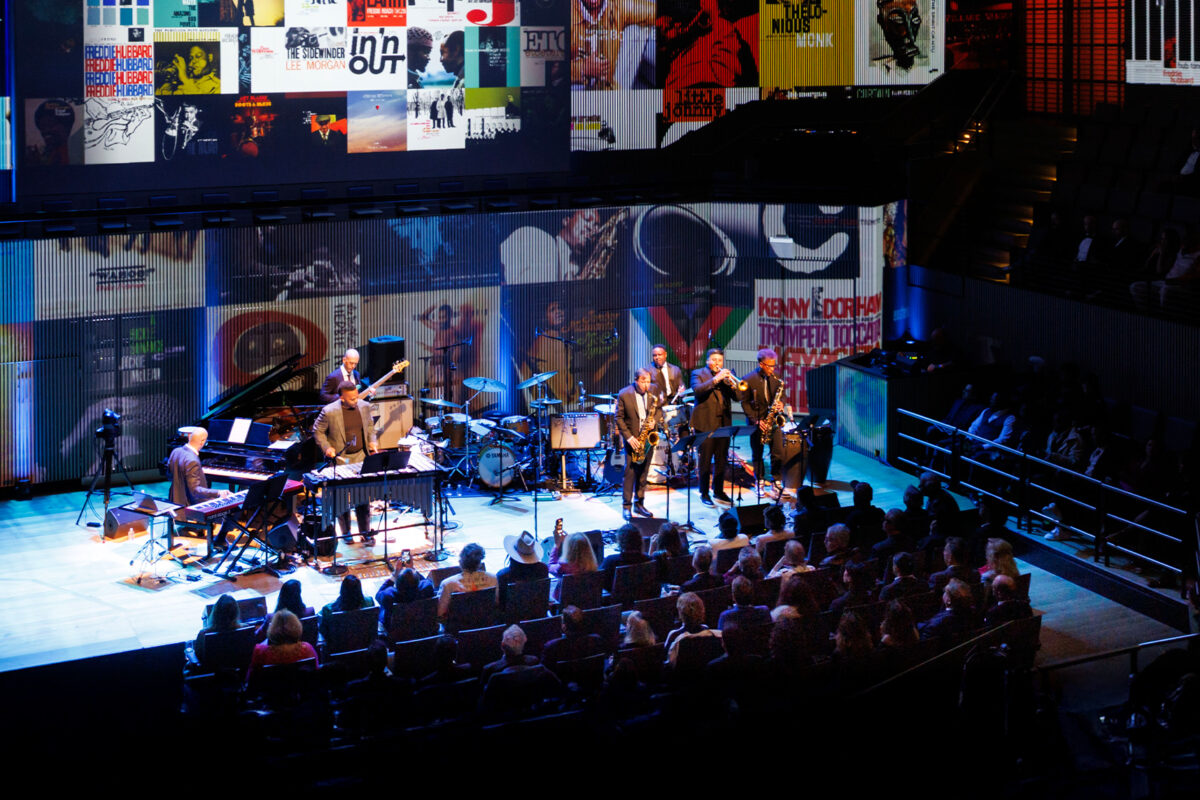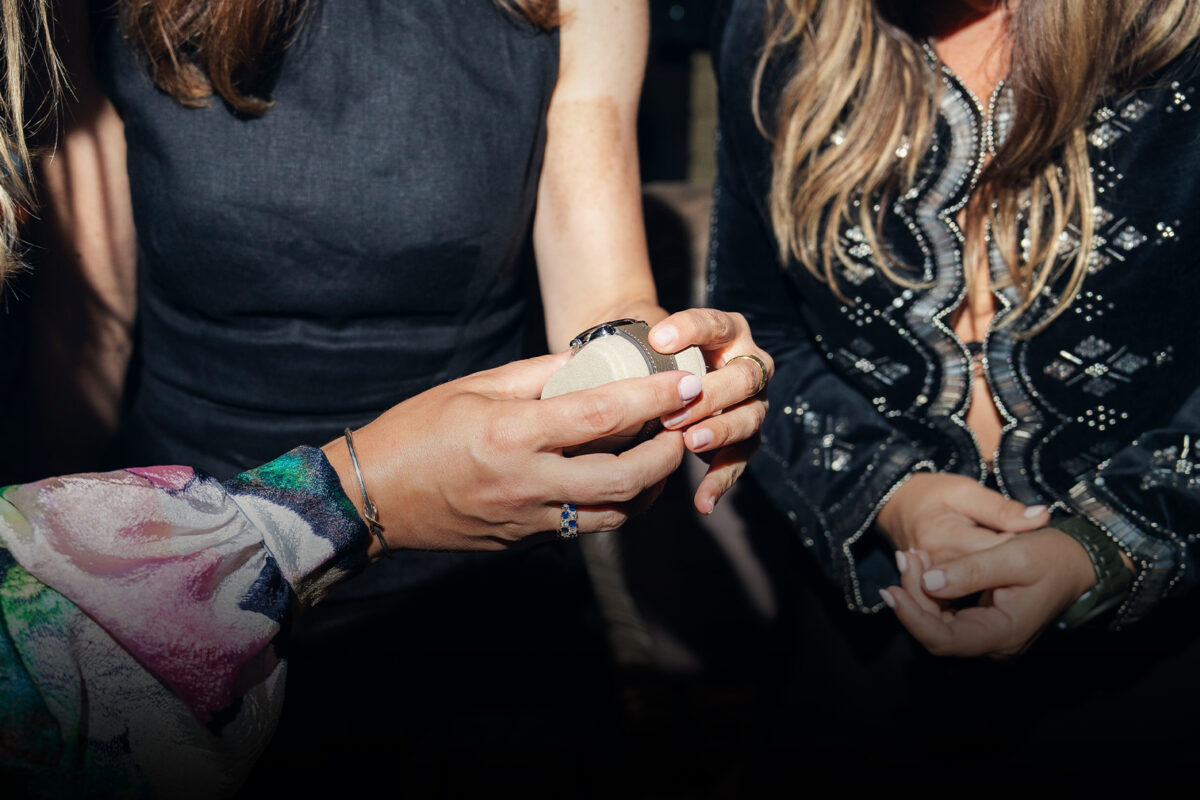The ceramics, reliefs and household items of the artist-daughter of Julian Schnabel hit the Nino Mier Gallery this month
Words by KELSEY McKINNON
While artist Lola Schnabel Montes lives and works in Sicily, she titled her new show at Glassell Park’s Nino Mier Gallery with the City of Angels specifically in mind. “Faccia d’angela, Every angel has another face” refers to the old Italian proverb that behind every angel face is something more duplicitous. Indeed, as with Los Angeles and Montes’ work, there is always more than meets the eye. For the new show, the New York-born creative (her father is the famed artist and Oscar-nominated auteur Julian Schnabel) replaced traditional canvases with colorful hand-painted tiles, reliefs, vessels and home items (including artichoke candelabras inspired by the carciofi that her friend Arrigo Ciprianni grows for his iconic Harry’s Bar). The pieces are emblazoned with imagery of supernatural spirits, angelic icons and flowers. In her transformative angel projection series, candles are placed inside egg-shaped terracotta lamps that emit glowing shadows of angels dancing on the walls. The use of ceramics in the show also represents a departure for Montes, who has previously concentrated on watercolor and oil paintings, film and video. Here, we talk to the artist about living in the island of milk and honey, how she never listens to her father about making art and her recent musings about Los Angeles. Through August 27.
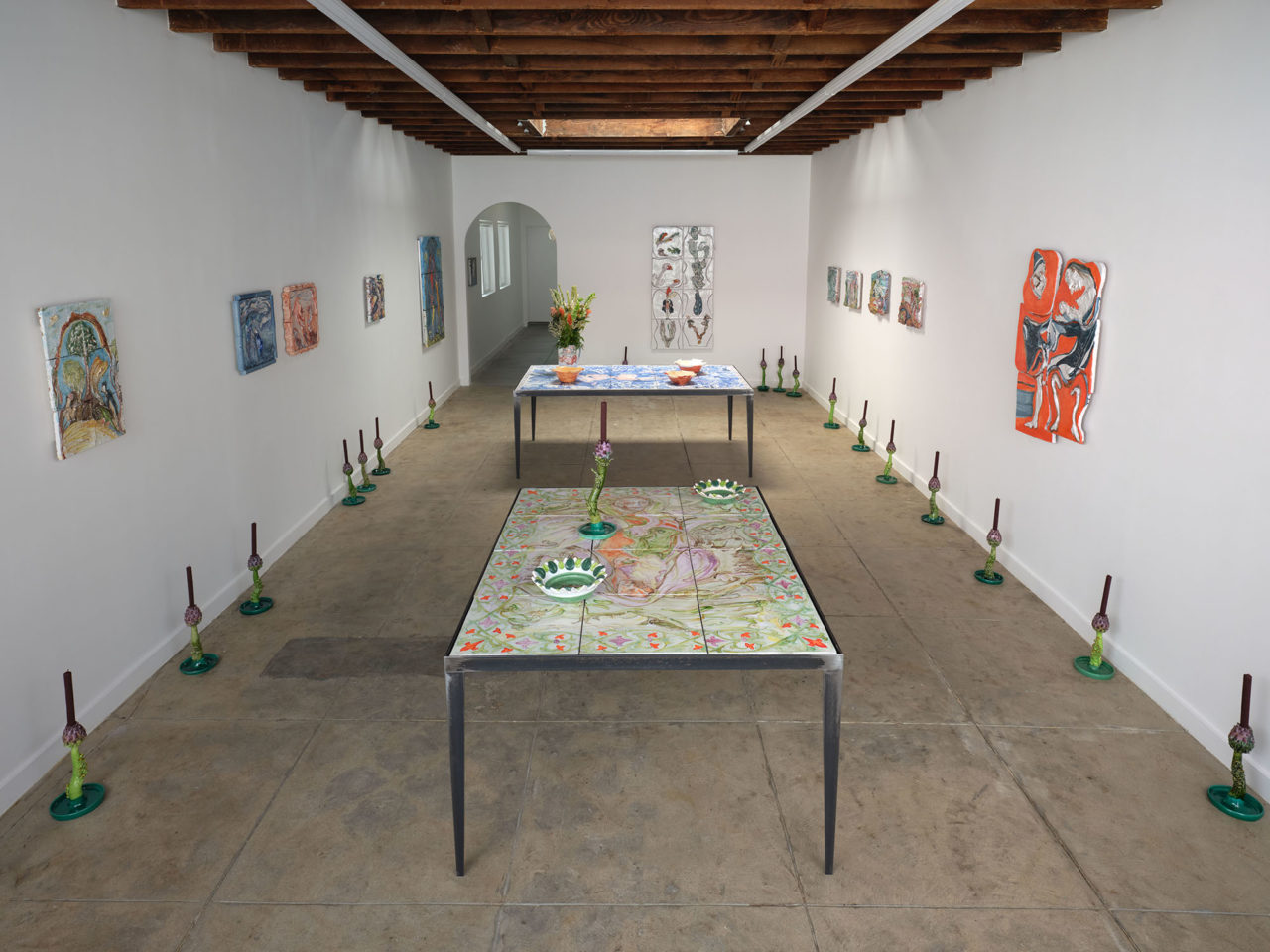
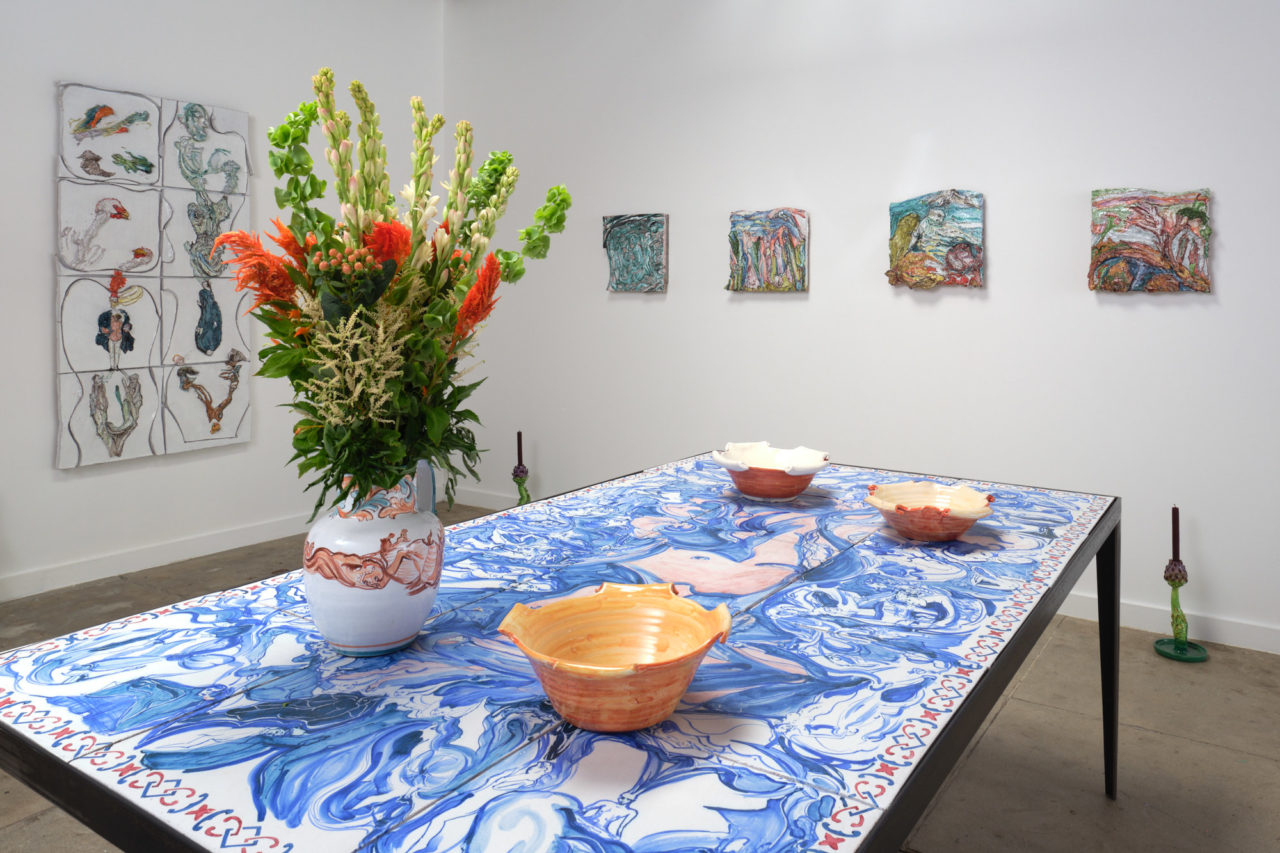
C: The use of hand-painted ceramics is a departure from your work in watercolors and oil paintings. What compelled you to work in this medium?
Lola Montes: I was asked to make tile tables and objects by a woman named Rita for her gallery called Muse to show in her design booth at Nomad [arts festival]. After making the initial table about two years ago, I bought a kiln and found this medium to be an ideal match for my drawing on a solid material. It is a tradition from Southern Italy and gave more meaning to my decision to work in Sicily.
C: Many of the pieces in the show also have a practical side (tables, lamps, bowls, vases, candelabras). Can you tell us a little about your ideas behind creating special works that are also meant to be used in everyday life?
LM: Well, I made some candelabras, tables and breakfast trays for myself when setting up my house in Sicily. We have a lot of meals outside so I guess it came out of a utilitarian impulse. Then I was interested in making three-dimensional paintings, relief paintings and more light sources, playing with projections of cut-out shapes thinking of Man Ray, Lucio Fontana, Picasso and della Robia and how to [create a] bridge between folk/craft and fine art.
C: Some of my favorites are the artichoke (carciofi) candelabras. Could you please tell us about your inspiration for these and how you constructed them?
LM: Arrigo Cipriani once took me to the lagoon islands near Venice where he grows carciofi for his restaurant Harry’s Bar and Harry’s Dolce. I believe the man dreams of artichokes! He explained to me the concept of La Castraura—basically one has to castrate the first artichoke of each plant for the others to grow—and I found that poetic and precocious, especially as a metaphor for love as one gets pricked trying to reach the heart. The boiled stems are also very detoxing for the liver and great in a Christmas broth called cardo.
“We all have our own version of what art is. This is my version”
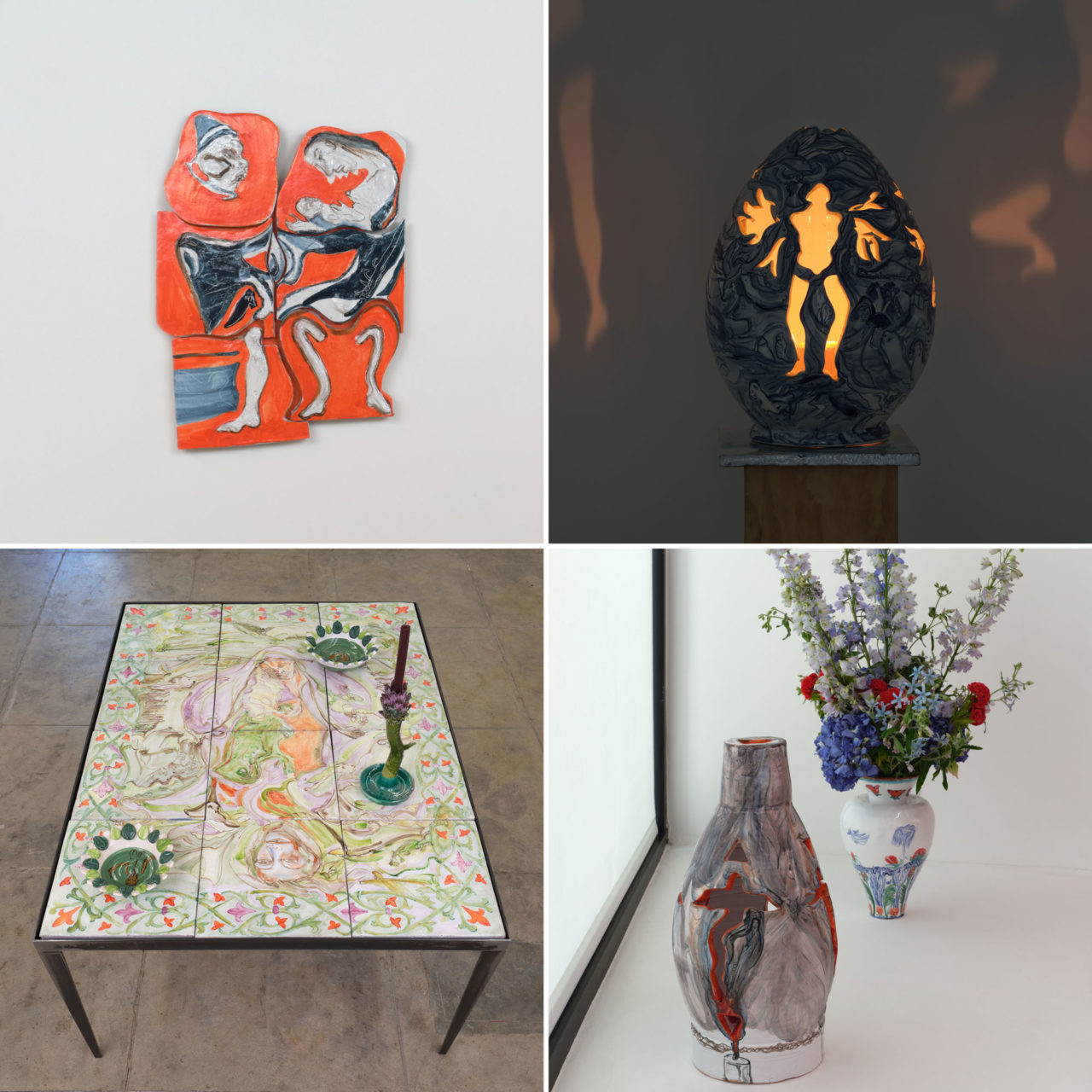
C: Can you tell us a bit about the name of the show?
LM: Faccia d’angelo is the nickname of a famous bandit from the Veneto area. It means that someone is putting up a grace face while they have something else cruel in mind. I chose this name as a play with Los Angeles; a theme of the show is ascending angels, our subtle physical and emotional body.
C: How did you connect with Nino Mier Gallery?
LM: My brother Vito was showing Nino his favorite artists and Nino, without knowing who he was, really zoned in on my ceramics and drawings and basically told Vito on the spot: “I want to do a show of that work.”
C: What are the best pieces of advice your father gave you about being an artist?
LM: “Don’t listen to anyone else when it comes to making your art.” Including him! “You know better what you need to do.” We talk about art sometimes.
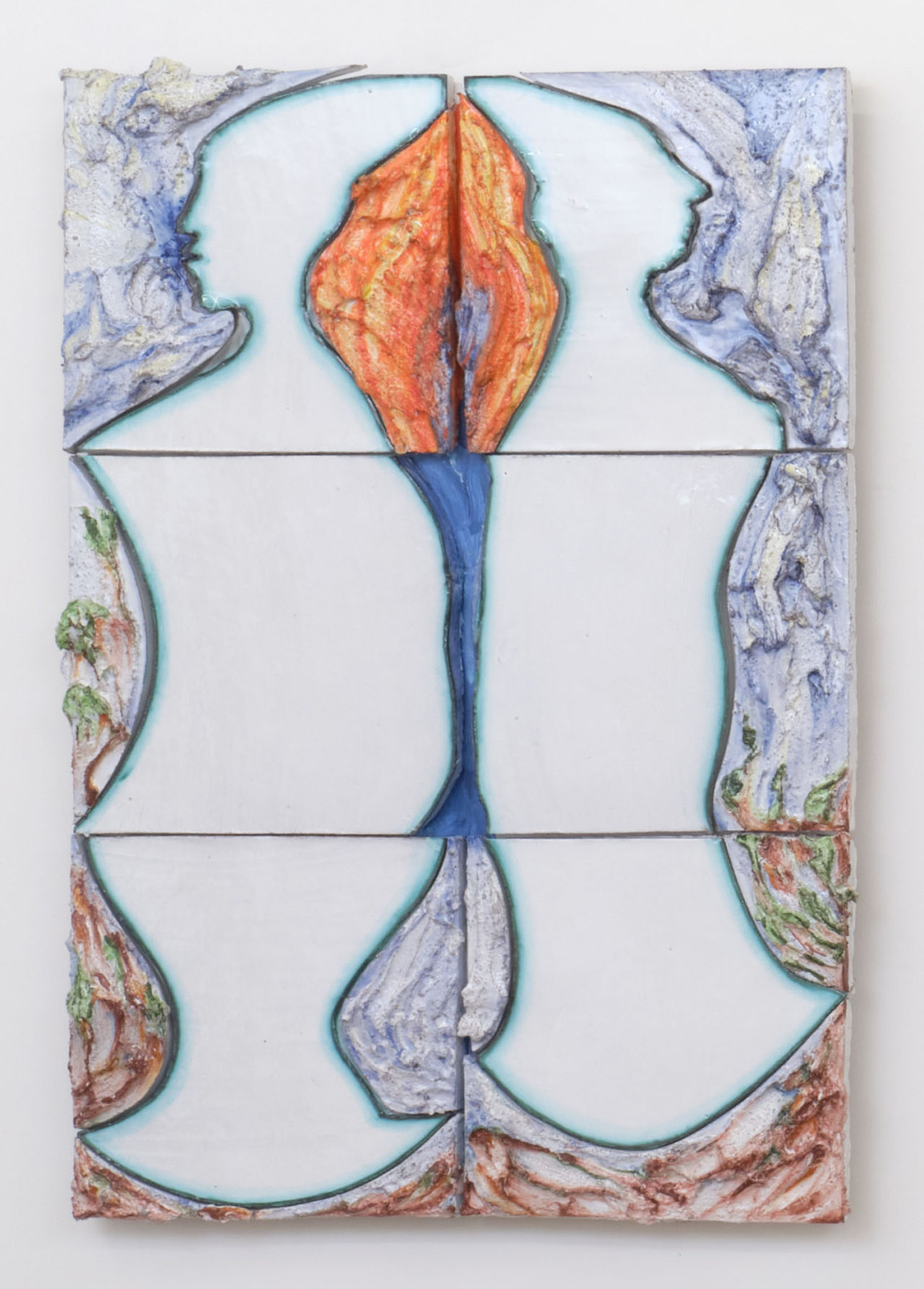
“I’m looking up for an opportunity to make art in whatever I find”
C: How would you compare your style and approach to art-making with your father’s style and approach?
LM: We all have our own version of what art is. This is my version. It has something to do with freedom for me, as well as for him I would imagine. I’ve fought hard to find my own identity in my work and there are natural references learning through osmosis.
C: Could you please describe your studio set up in Sicily?
LM: I paint outdoors within high stone walls and have a fig tree in the center of my garden. I light a fire every day and am barefoot painting under the sun or moonlight. You can hear cows mooing in the [surrounding] fields which are filled with carob trees and smell of chocolate and cow shit. I also have an indoor space that used to be a stable. It has a rounded ceiling so its temperature is stable and cool in the summer. I store my paintings and drawings there and have two kilns to make ceramics and a wheel to throw the clay. This clay comes from near Mount Etna and is rich with minerals that add a certain harmonic key and iridescent quality when my pieces are fired.

C: Do you plan to spend some time in California during the show?
LM: I was there the initial ten days installing and will be back the last ten days of August. I like how open the space is and [that there are] hidden characters in neighborhoods to discover. I was dismayed by the homeless situation and found it tragic.
C: What are some of your favorite things to do and see when you are in California? Where do you love visiting when you are here?
LS: The Norton Simon Museum is a favorite and the Getty Villa. I recently discovered the flower market in Downtown L.A. when making bouquets for my vernissage that was a feast on color. Little Tokyo was interesting—I’m fascinated by the colossal statues around car body shops and theaters. I remember Dennis Hopper and Ed Ruscha finding inspiration in billboards and text so I’m looking up for an opportunity to make art in whatever I find, even the sun-bleached sweatshirts on the Venice Beach boardwalk.
August 4, 2022
Discover more CULTURE news.

